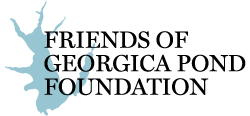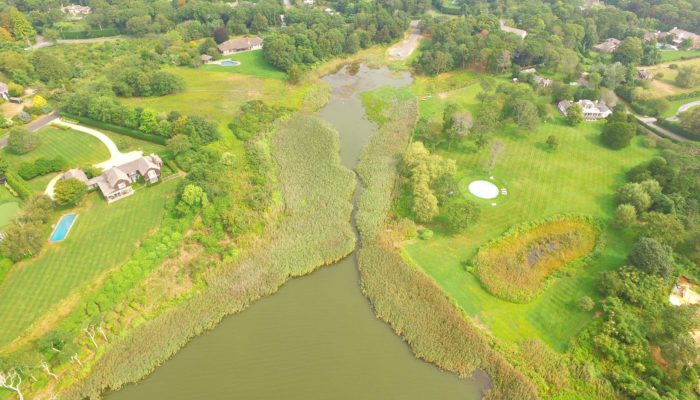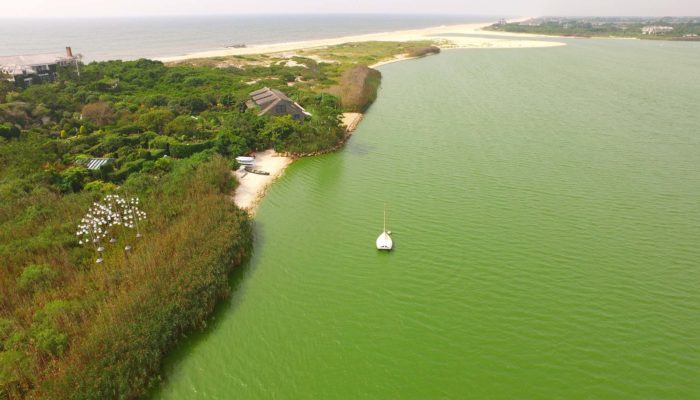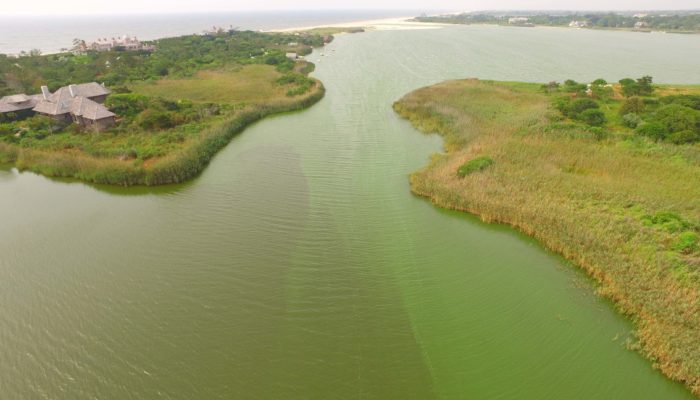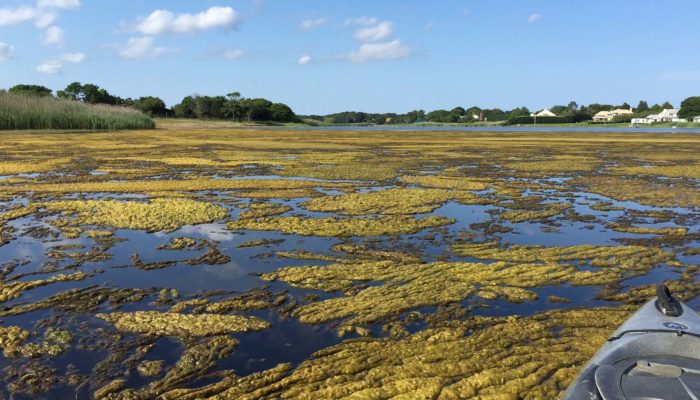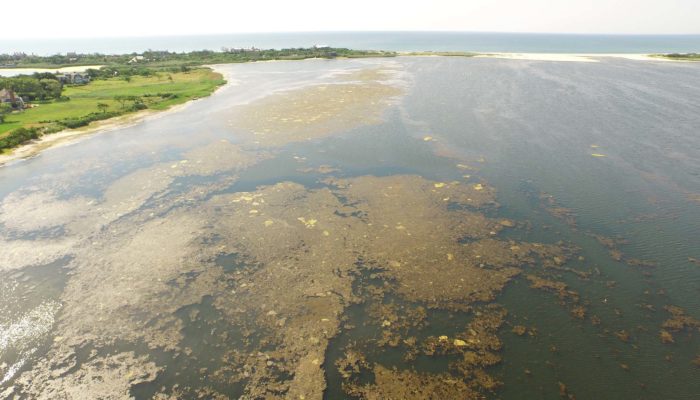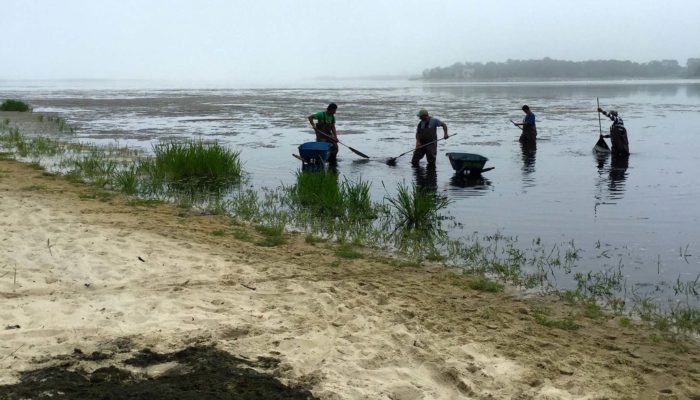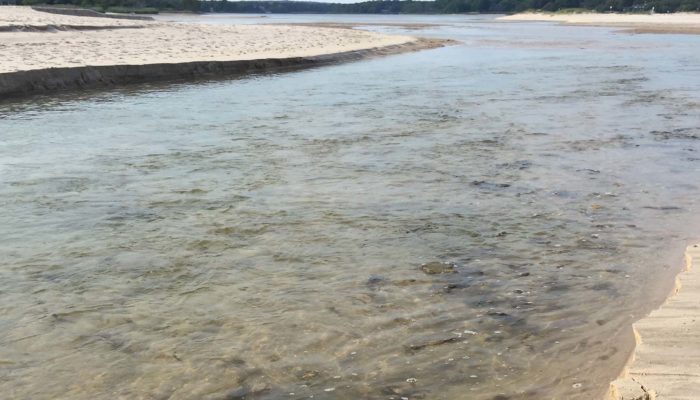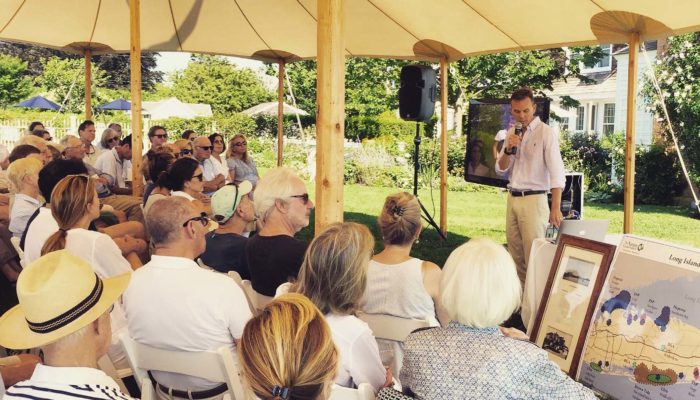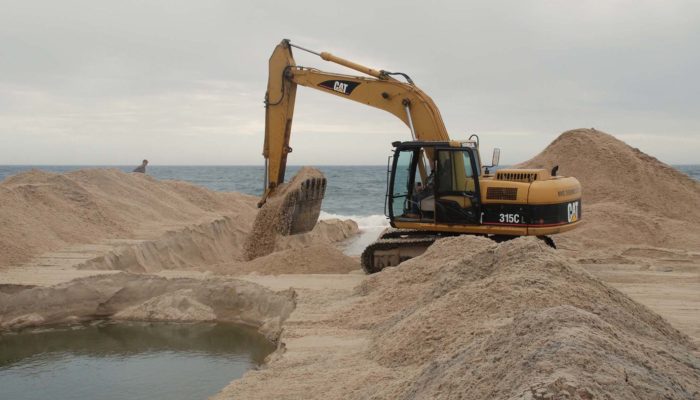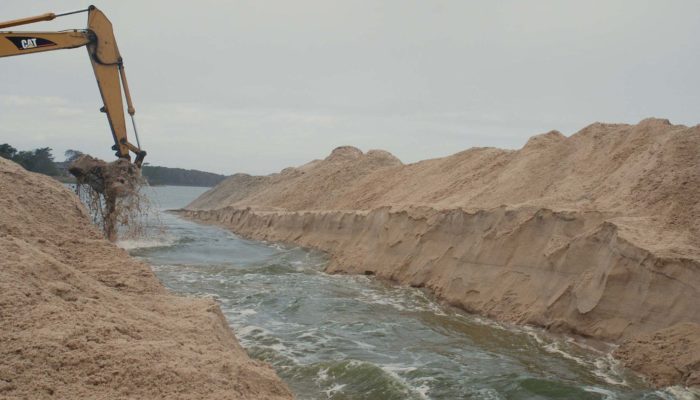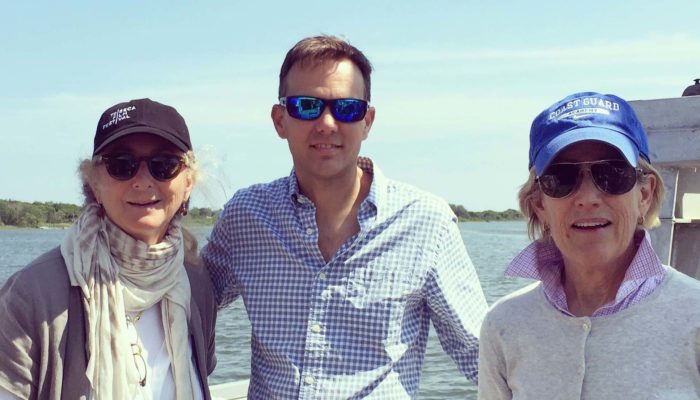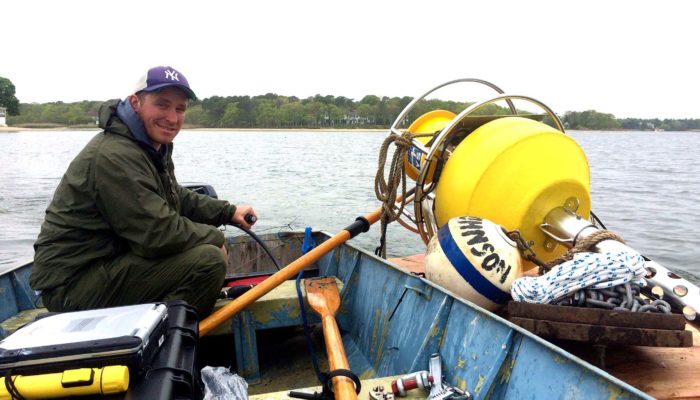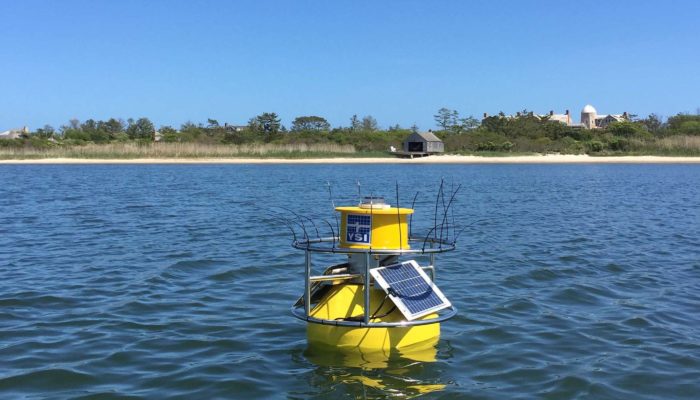Georgica Pond’s water quality has declined dramatically and in recent years, the pond has experienced:
- macro and blue-green microalgae blooms
- low oxygen levels
- fish kills
In many cases, the blue-green algal blooms produce toxins, which are harmful and even fatal to pets and have resulted in closing the pond to crabbing, fishing and swimming.
In addition, the aggressive, non-native grass Phragmites australis has invaded much of the shoreline further contributing to eutrophication of the pond.
Nutrient Loading Models of Georgica Pond
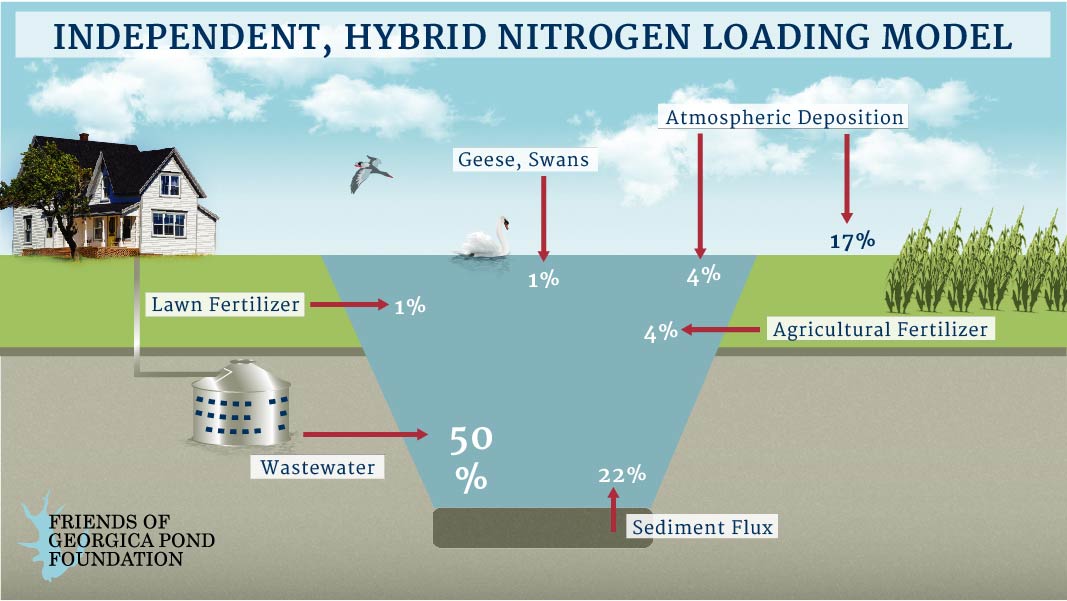
These Independent, hybrid models of nitrogen and phosphorus loading into Georgica Pond were developed by Dr. Christopher Gobler of Stony Brook University. The models show the different sources of the two key nutrients nitrogen and phosphorus that are the main causes of algal blooms. Wastewater from septic systems is the largest contributor of nitrogen while pond bottom sediments are the largest contributor of phosphorus.
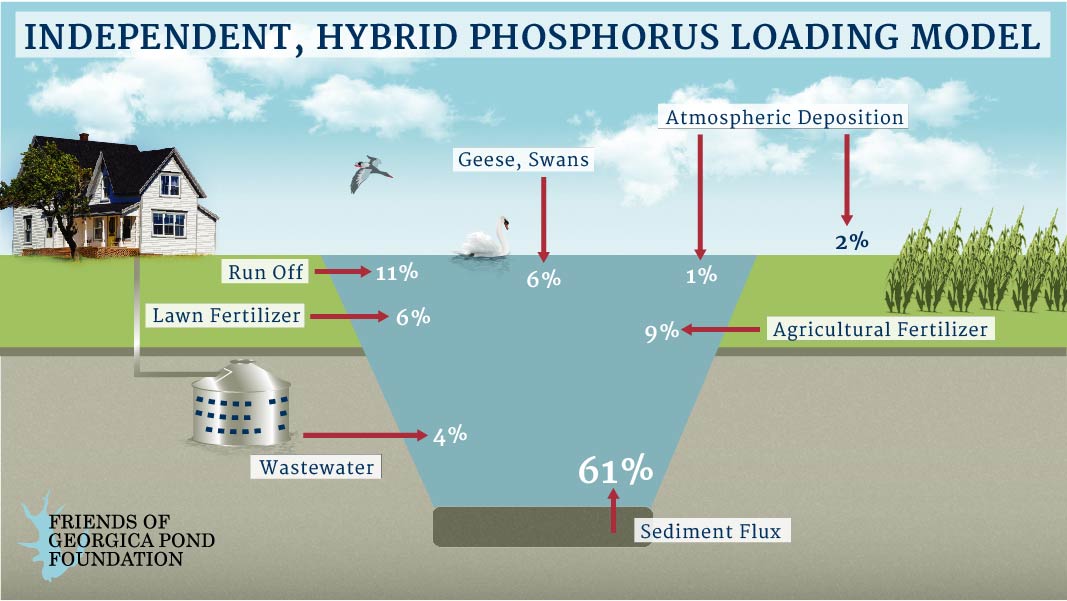
Solutions
To document the cause of the above threats and provide a scientific analysis and a sustainable plan for remediation of these environmental and human health risks, Friends of Georgica Pond Foundation engaged Dr. Christopher J. Gobler of the Stony Brook University School of Marine and Atmospheric Sciences to conduct a two-year study.
One of the most immediate developments of Dr. Gobler’s study is the installation of a telemetry buoy that allows for continuous monitoring of multiple water quality and chemistry characteristics. You can find out what’s happening at Georgica Pond 24 hours a day by clicking here.
You can also read his report, presented to the community on August 1st, 2015 by clicking here.
Dr. Gobler’s preliminary recommendations include short and long term actions and goals, which working in partnership with local governments and nonprofits, the Friends of Georgica Pond Foundation hopes to accomplish:
- Harvest macro algae to remove nitrogen and phosphorus and improve aesthetics.
- Research Permeable Reactive Barriers to mitigate high nitrogen groundwater before it enters the pond in targeted locations. This is an experimental technique that has shown to be effective in other locations.
- Dredging accumulated sand and excavating the ocean inlet and bottlenecks at Georgica Cove to improve pond water circulation.
- Excavating Phragmites and replacing or encouraging native wetland vegetation at targeted locations.
- A pilot project of beneficial dredging of muds to remove legacy nutrients (especially phosphorus) and improve water circulation in the pond.
- Advocating for responsible use of fertilizer and pesticides by farms and homeowners.
- Supporting vegetative buffer zones and reduction of the amount of lawn within the watershed.
- Advocating for and installing state of the art wastewater treatment in the watershed, as wastewater is the largest source of nitrogen to the pond.
